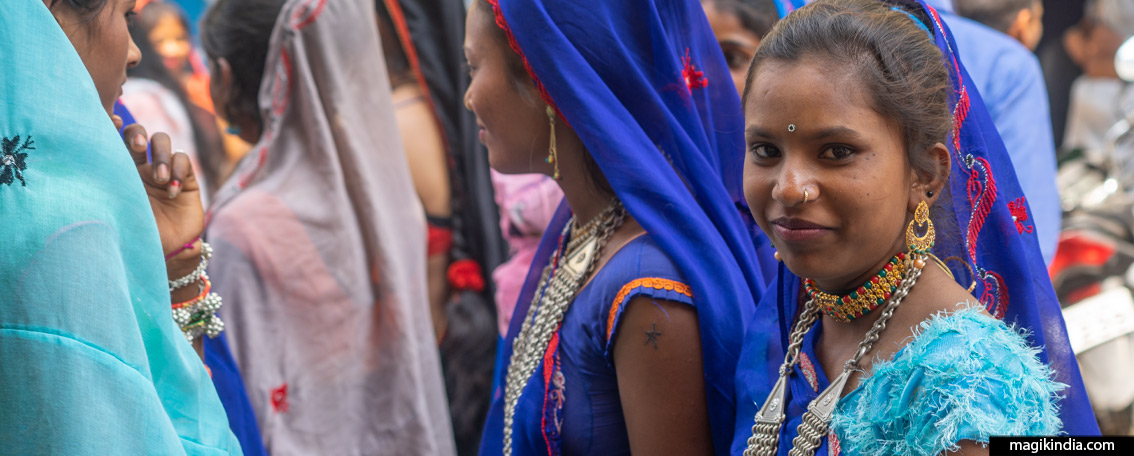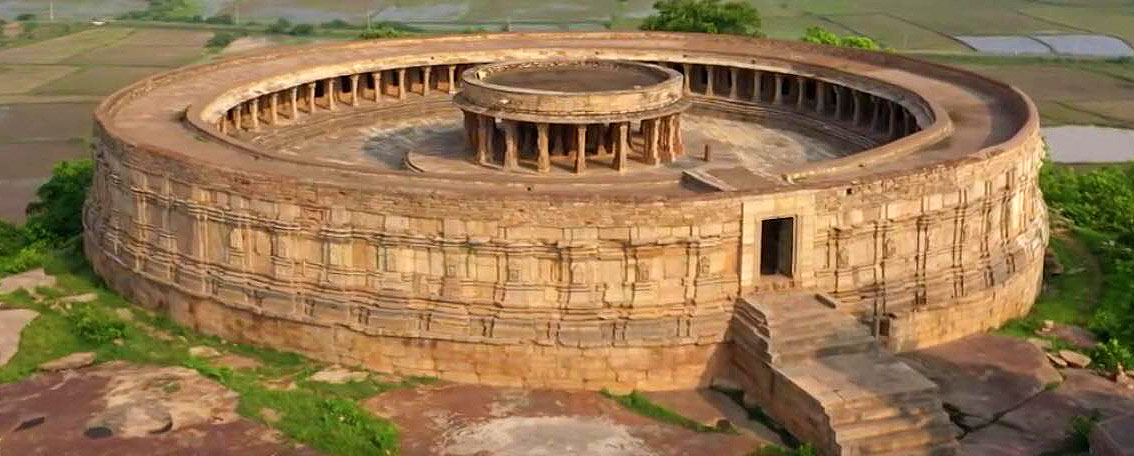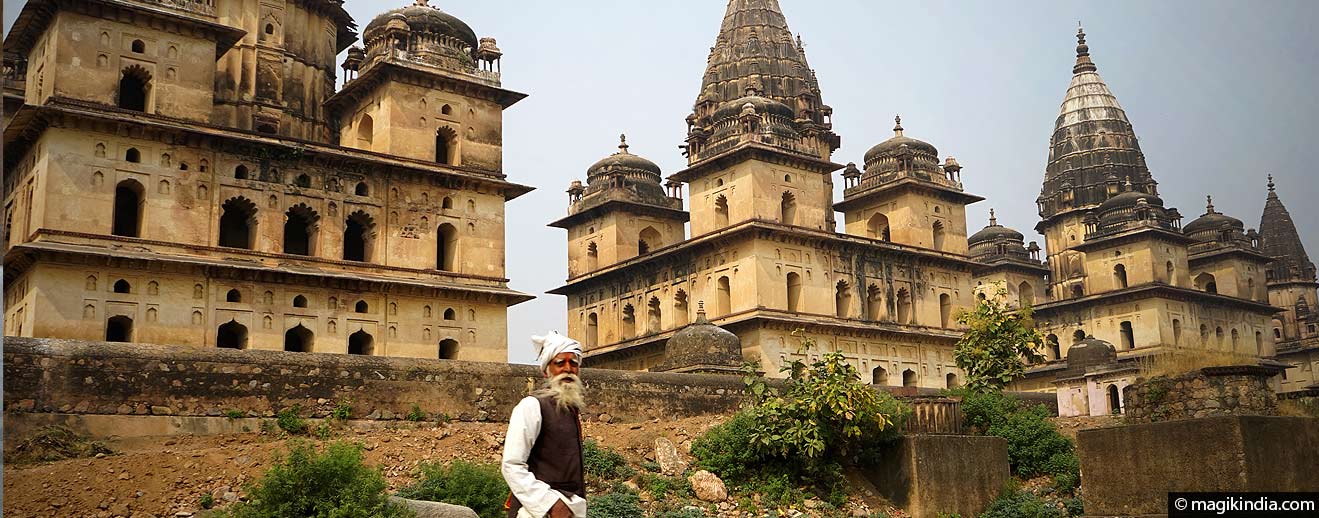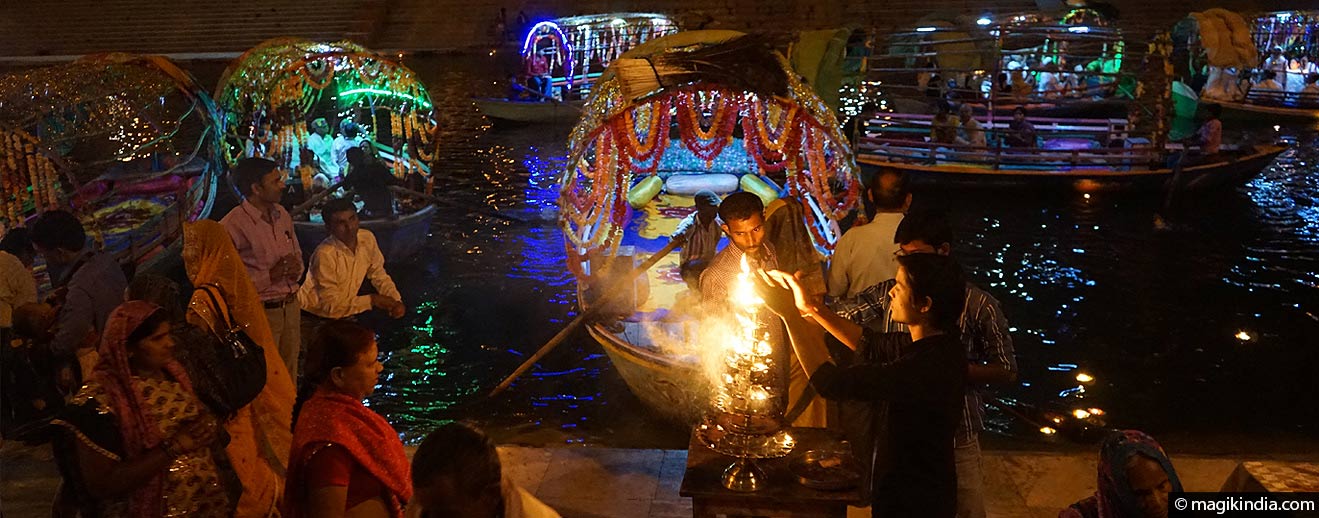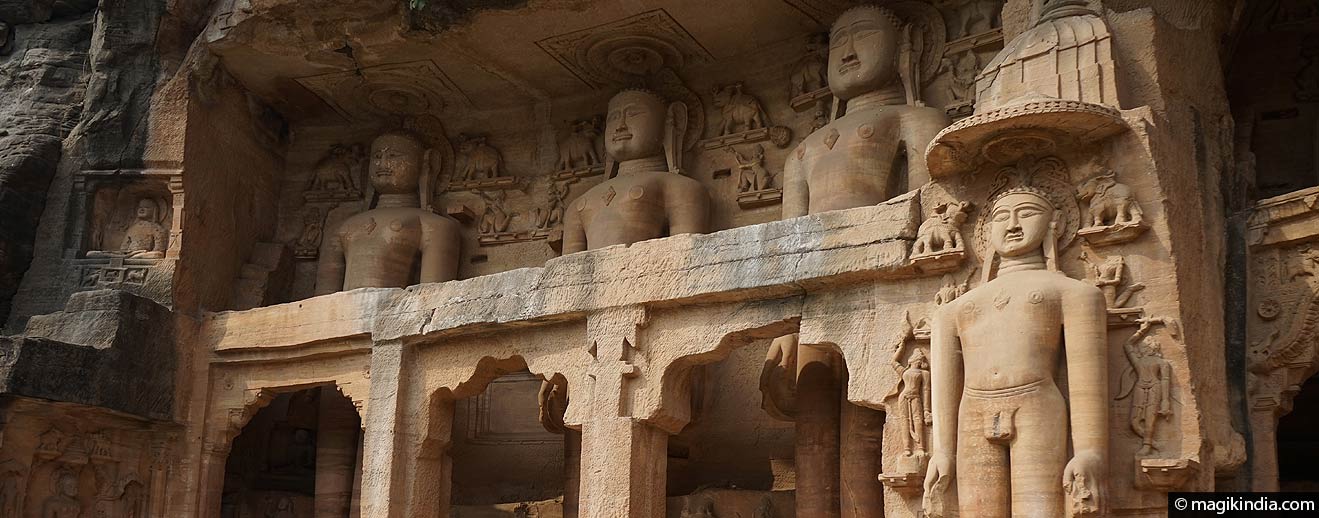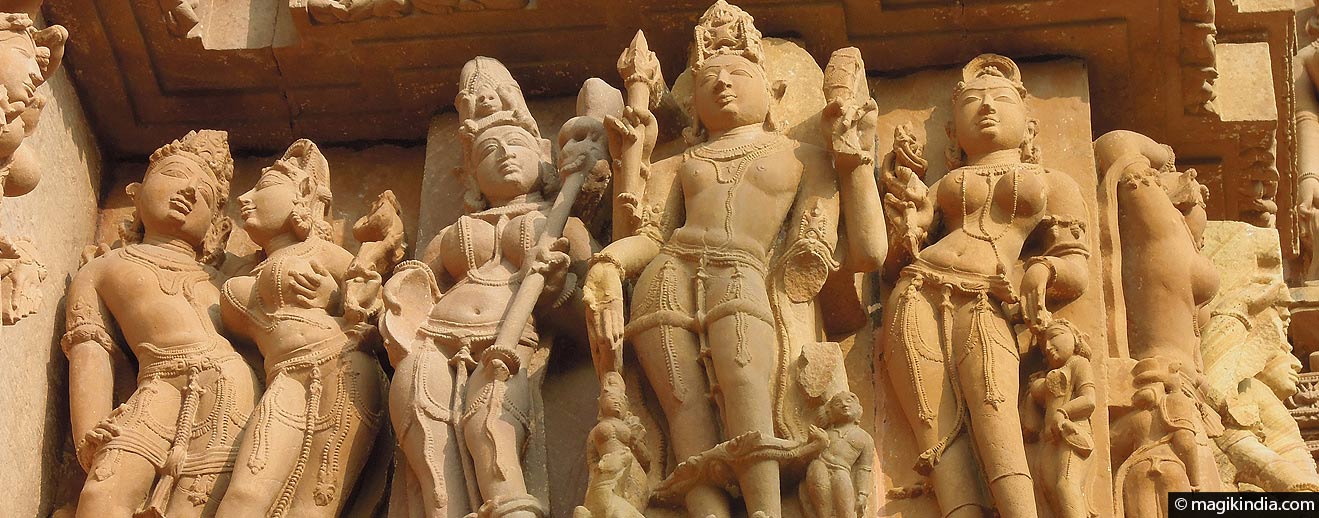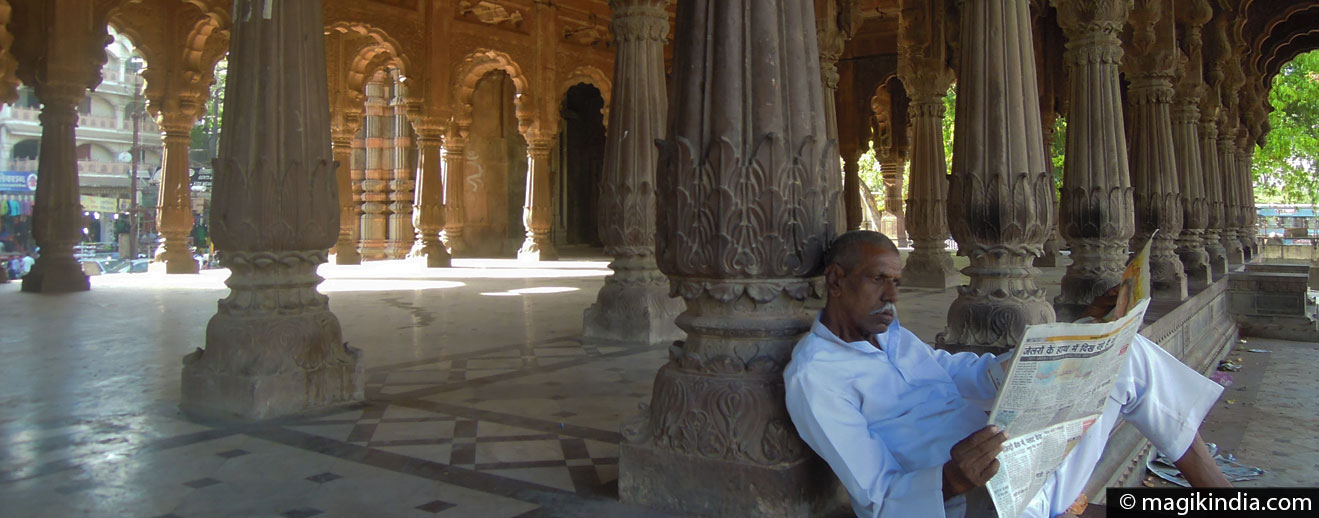
Indore, the city of Holkar’s rulers
The town of Indore, which was once a village at the confluence of the Khan and Saraswati rivers, is the commercial capital of Madhya Pradesh. It is renowned for its historic monuments, reflecting a glorious past under the patronage of the queen Ahilya Bai Holkar. Indore lies equidistant from two major Hindu pilgrimage sites, the Jyotir Lingam temples at Ujjain and Omkareshwar.
Lal Bagh Palace
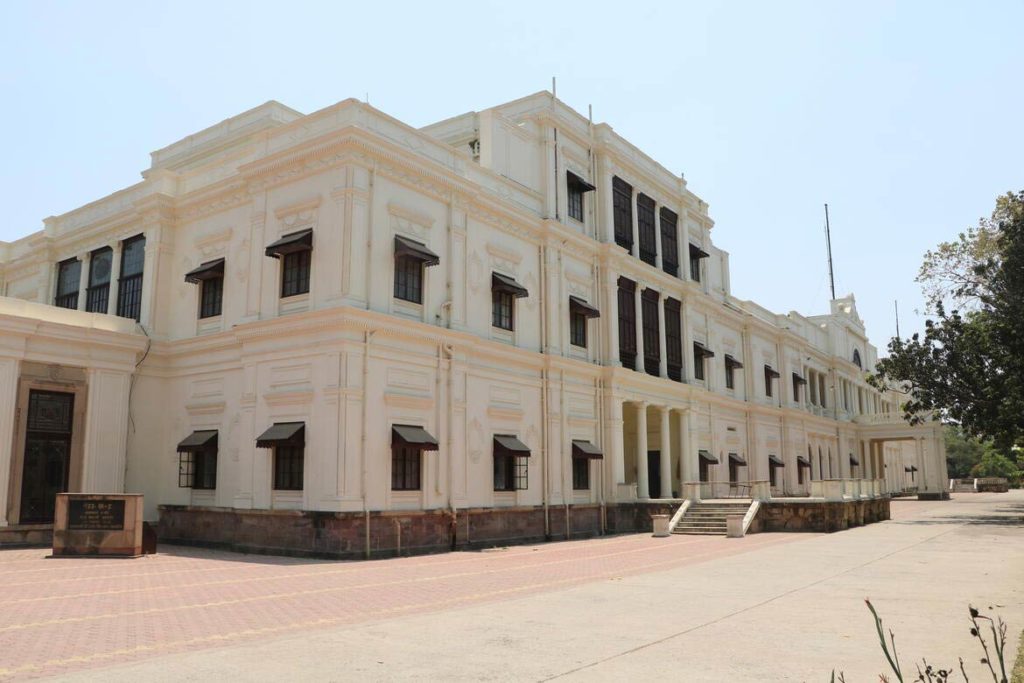
Lal Bagh palace, built in European style by the Holkar maharajas between 1886 and 1921, reflects that dynasty’s refined lifestyle. Now converted into a museum, the palace boasts a collection of coins and another of contemporary Indian and Italian paintings and sculptures.
The palace interior is sumptuously decorated, taking inspiration variously from Versailles in France, Italy for its marble columns, Belgium for its stained glass and Buckingham Palace for its gates.
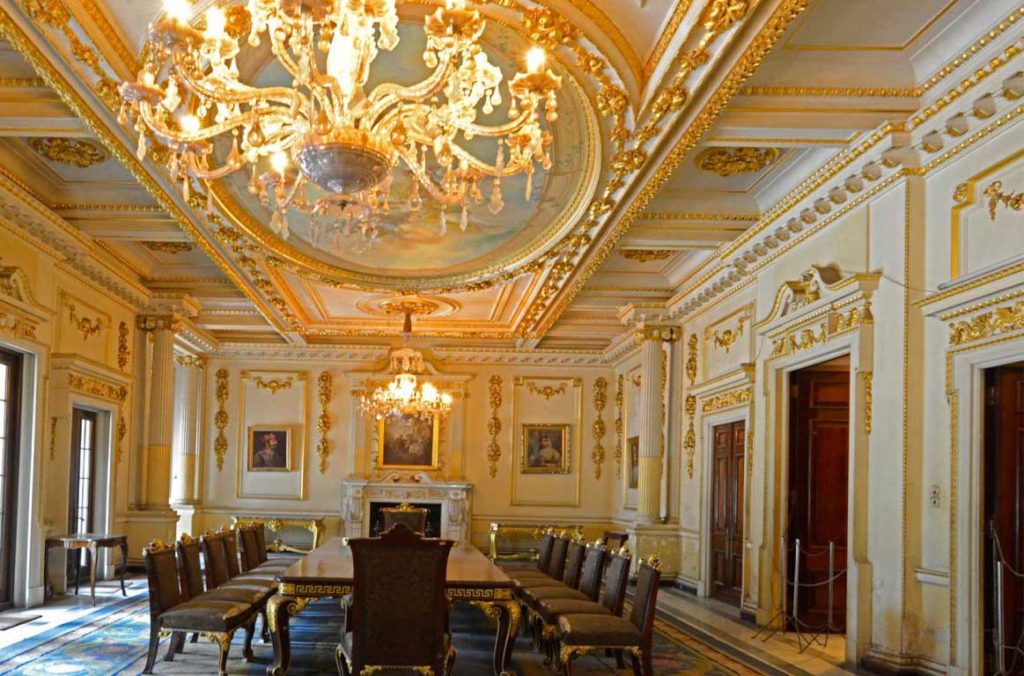
Rajwada, Holkar Palace
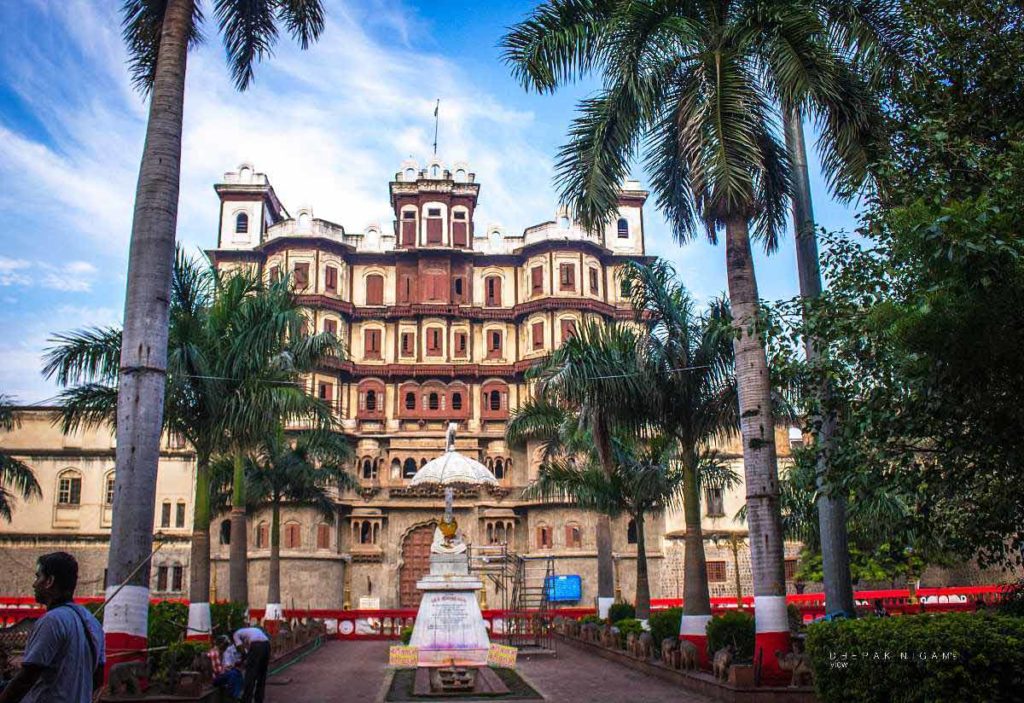
Rajwada is a seven-storey palace built by the Holkars, a Hindu Maratha royal house, over a long period in the 18th and 19th centuries. It is a delicious mix of Maratha, Mughal and French architectural styles.
The three lower storeys are built of brick and the upper floors of wood. Vulnerable to fire, these floors have suffered three major fires over the years, most recently in 1984. Only the front part of the original structure now remains. A lovely garden has been created in the rear part, with fountains, an artificial waterfall and some fine 11th-century sculptures.
Kanch Mandir, the mirror temple of Indore
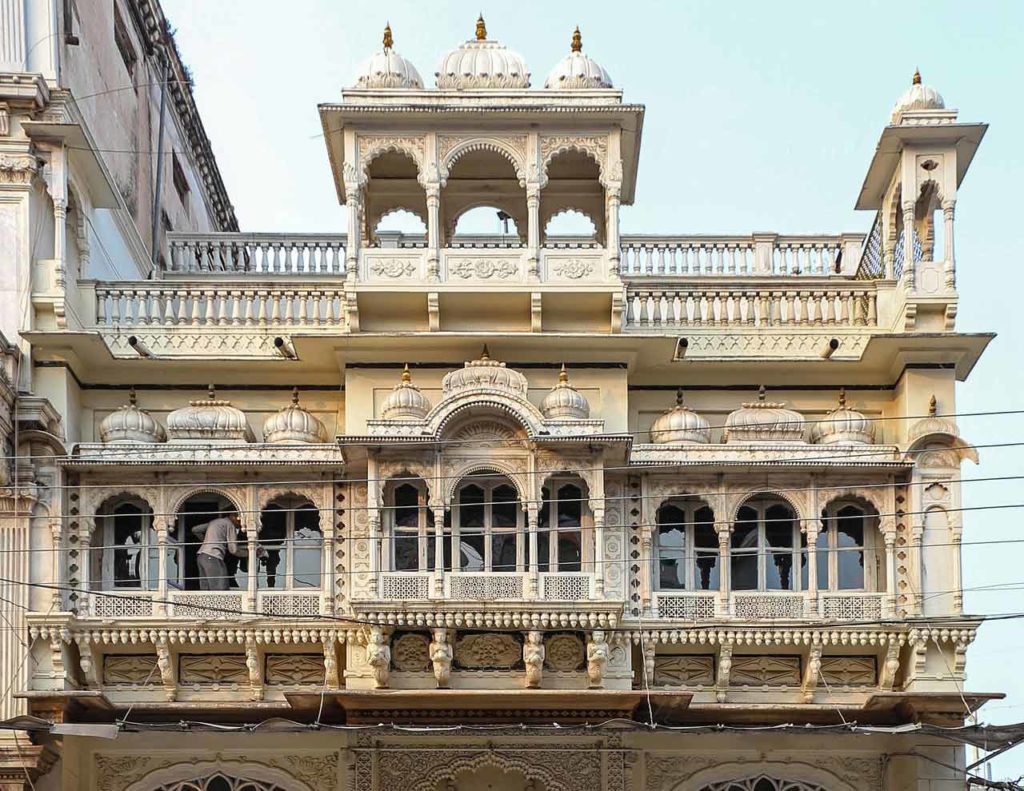
Kanch Mandir is an astonishing Jain temple, lined from floor to ceiling with mirrors and mosaics.
A gem of a place! Seth Hukumchand, a rich Jain industrialist known as the Cotton King, had it built in 1903.
Were it not for the black onyx Mahavira statue one could easily forget that this is a temple and not a palace.
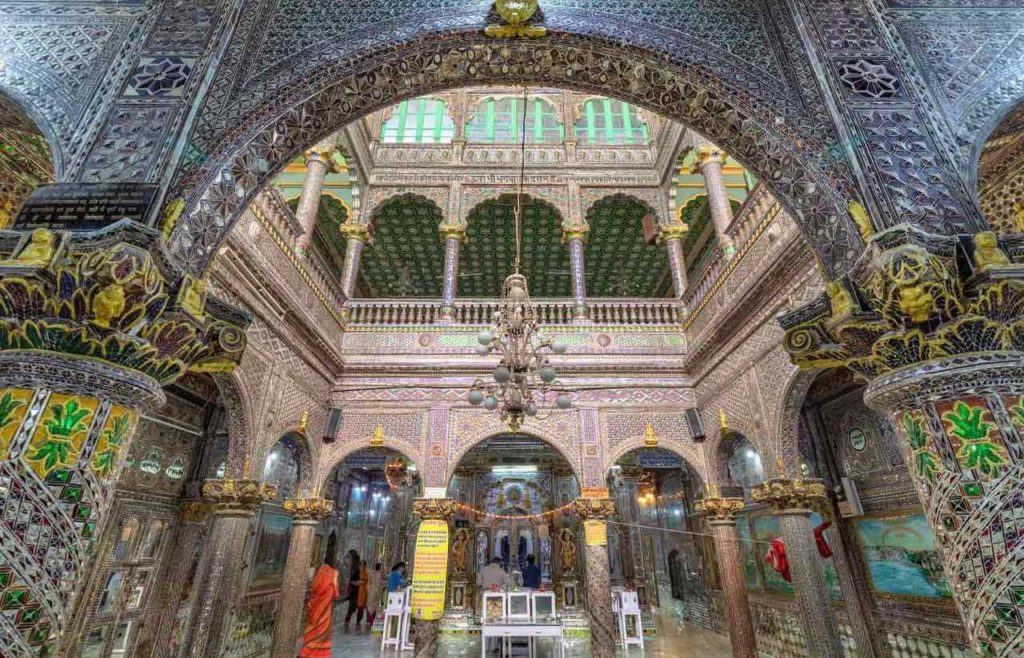
Cenotaph of Krishnapura
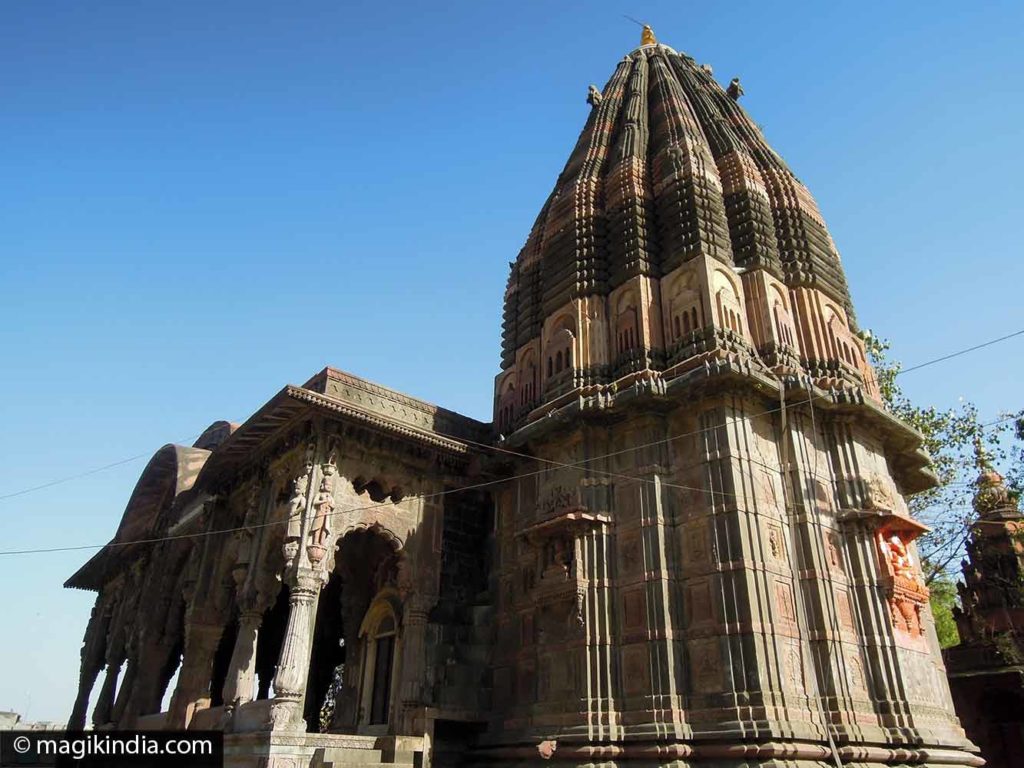
On the banks of the River Khan not far from Rajwada stand the cenotaphs or chhatris of the Holkar maharajas, built in the Maratha style with domes and carved arches.
A stretch of the Khan river has been turned into an artificial lake with a fountain and gardens.
It’s an interesting place but poorly maintained, which is a pity.
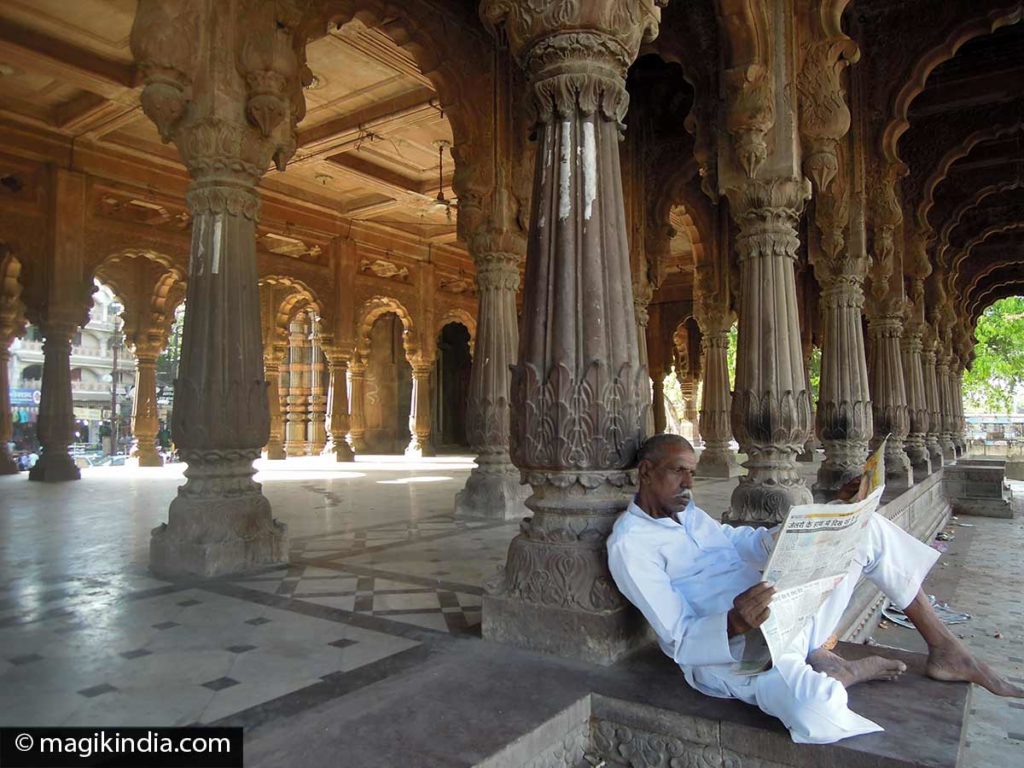
Annapurna Temple
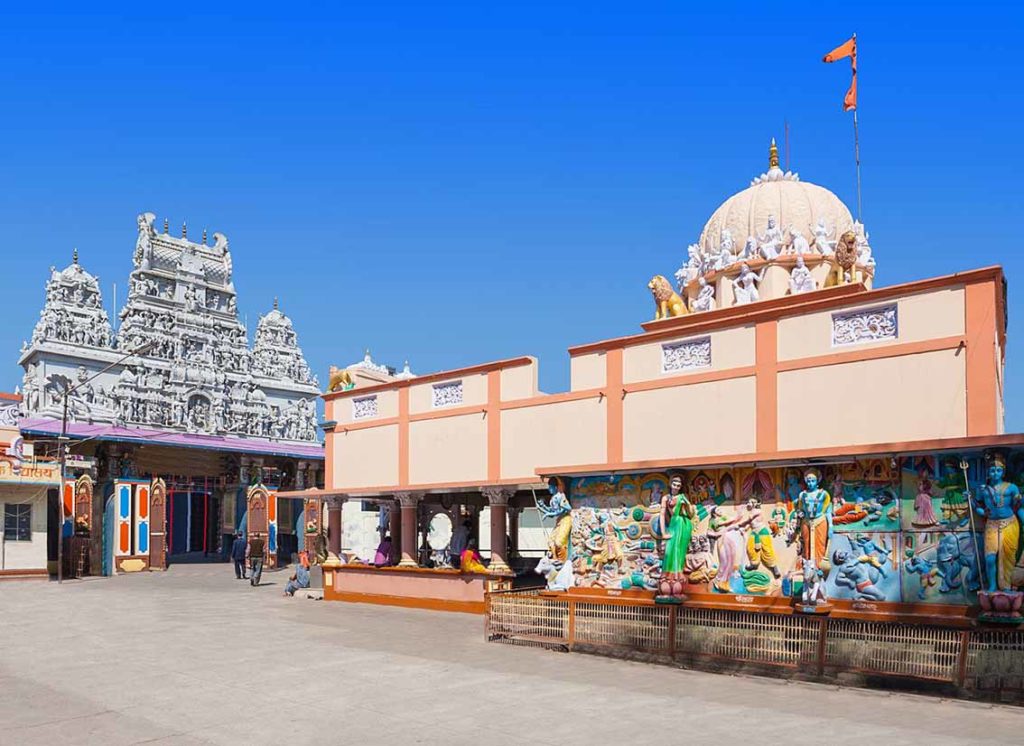
This shrine to Annapurna, the goddess of food, is a Hindu pilgrimage site. In design it resembles the Meenakshi temple in Madurai.
The entrance gate is flanked by four life-size elephants that seem to be holding up the entire superstructure, which is ornately decorated with carvings of mythological scenes. As well as the main temple to Annapurna Devi there are shrines to Kal Bhairav (Shiva) and the monkey god Hanuman, and a cow sanctuary or gaushala.
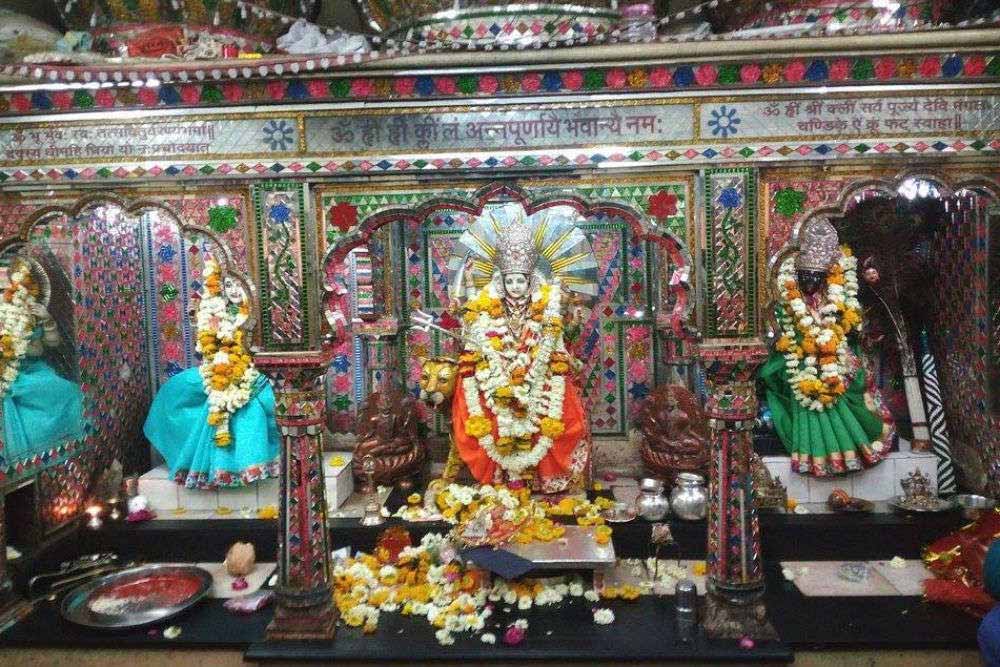
Bada Ganpati temple
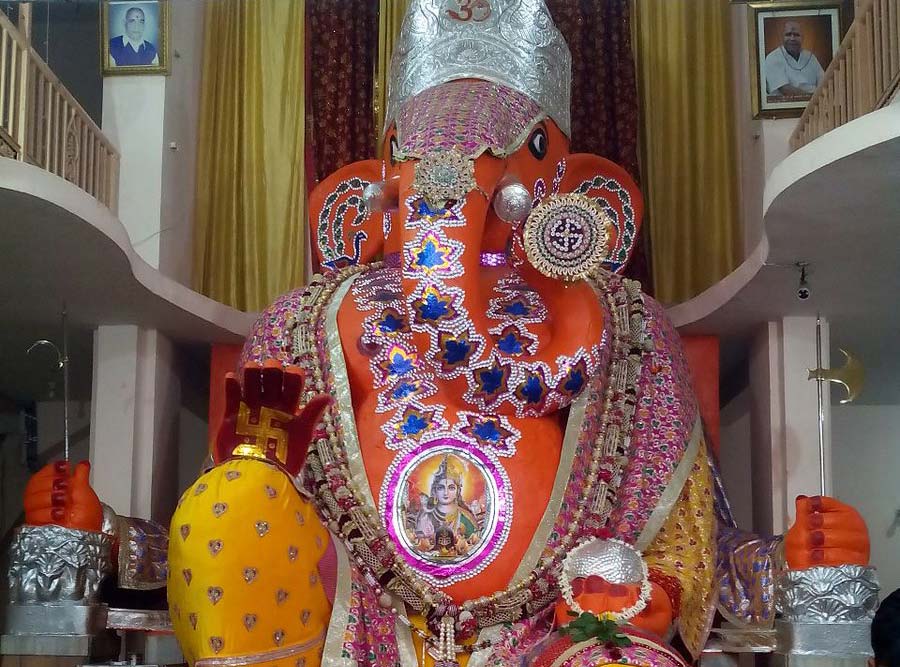
This temple built in 1875 houses a huge, brightly-coloured statue of the god Ganesha. At 25ft tall it is one of the largest Ganesh statues in the world. It is said to have been built because of a dream dreamed by Shri Dadhich, a devotee from Ujjain.
It is said to be made of brick, lime, earth from the seven Sapta Puri holy places, cow dung, powdered gemstones (diamond, emerald, pearl, ruby and topaz) and holy water from India’s main pilgrimage sites.
Khajrana Temple

The Khajrana neighbourhood is famous for its Ganesha Mandir, which attracts large crowds of devotees.
The temple is thought to have been built by the queen Ahilya Bai. The faithful believe it will grant the wishes of all who come there to pray to the elephant-headed god Ganesh.
Nearby is the dargah or mausoleum of the Sufi saint Nahar Sayed, which attracts many Muslim pilgrims.
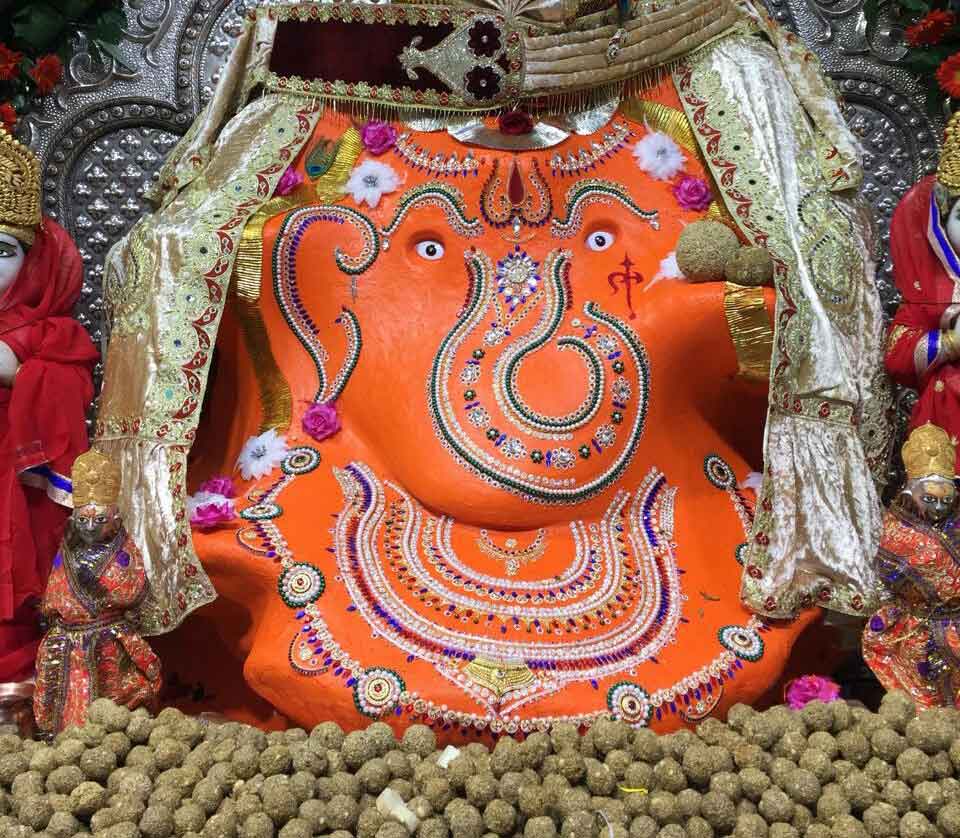
Gomatgiri jain temple
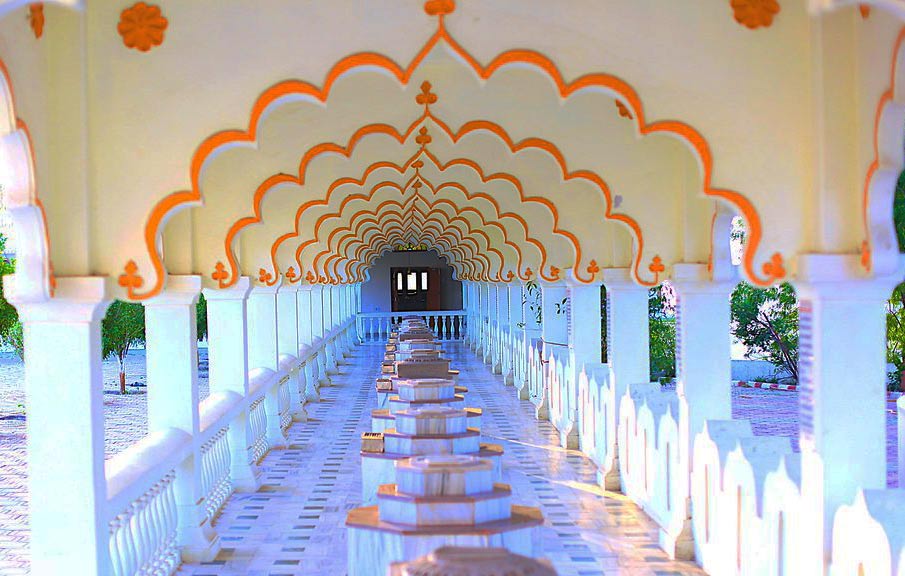
The Gomatgiri Jain temple was built in 1981 on a small hill ten minutes from Indore airport.
It houses a 6m statue of Gomateshwar which is said to be a replica of the one at Shravanabelagola in Karnataka. The complex includes 24 temples, one to each of the 24 Tirthankaras (saints) of the Jain religion.
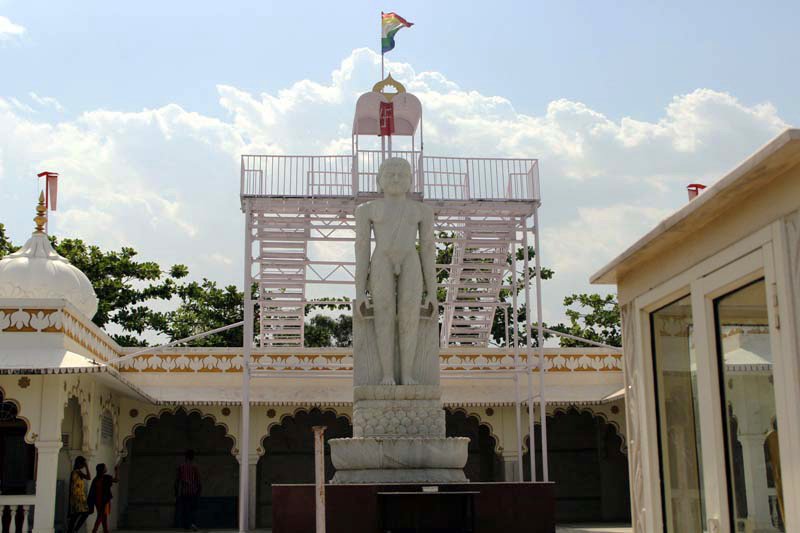
Jyotir Lingams of Ujjain and Omkareshwar
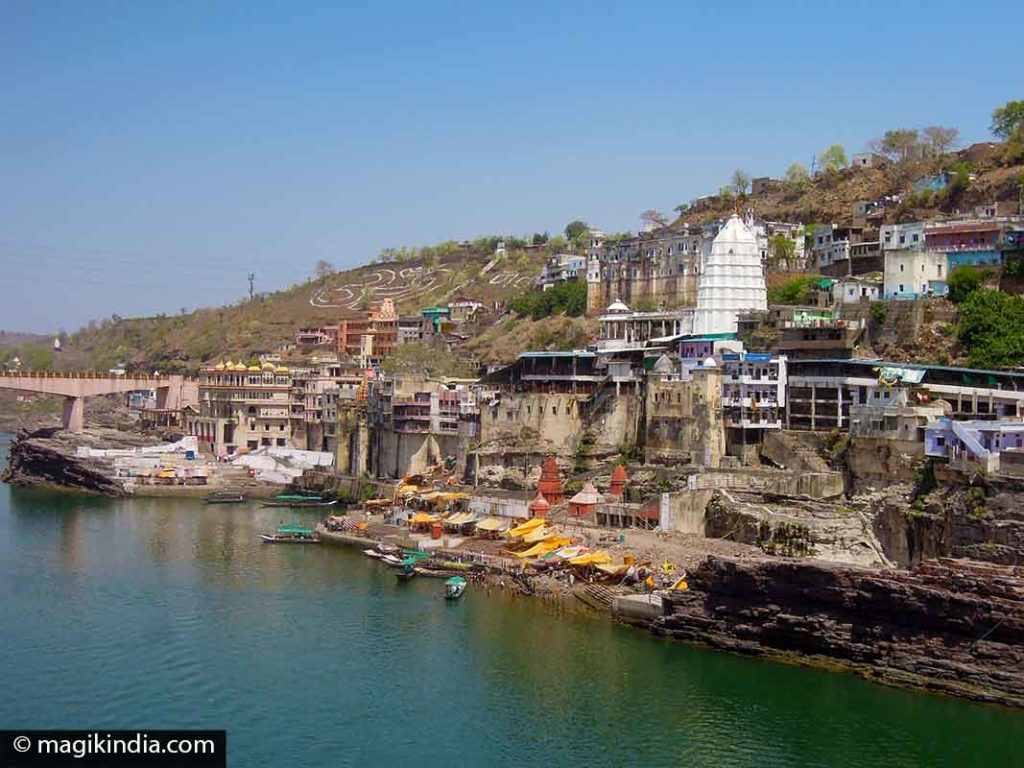
Indore lies equidistant from two major Hindu pilgrimage sites, the Jyotir Lingam or ‘Lingam of light’ temples at Ujjain and Omkareshwar…
KNOW MORE ABOUT IT
